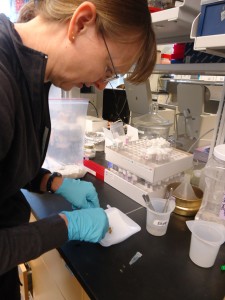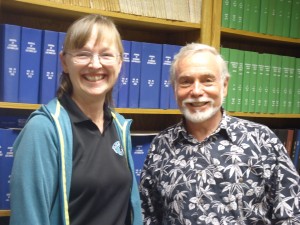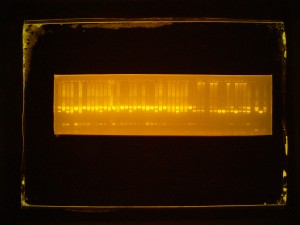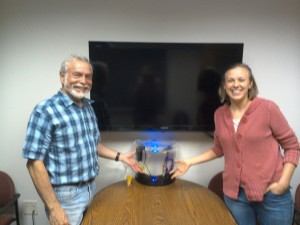Monday June 30 – July 3, 2014
|
Earlier this week, I visited Dr. Marcé Lorenzen’s lab and watched Clay Chu insert DNA into beetle embryos. Follow the video link on the right to see him explain how transgenic beetles are made. Clay also explains the importance of his research on wild type species for which we have very little genome knowledge. I learned an interesting fact about his work: only 2% of the embryos that have DNA inserted will develop into adult beetles. Clay’s research will take a great deal of time and patience to complete. |
Dr. Lorenzen’s Lab NCSU 2014 – DNA Insertion
|

Later on in the afternoon, I returned to Dr. Gould’s Lab to help Emma with a DNA extraction. I enjoyed this work after reading related articles and listening to a visiting professor’s presentation. It allowed me time to think and reflect on what I was learning. Another fun find that a visiting researcher shared with us this week: Thanks to Jen Baltzegar, a graduate student in Dr Gould’s lab, I was able to extract DNA, amplify the DNA using PCR, and then run a gel on the samples to view the results. This was a two day process of separating the DNA and preparing samples for the PCR and gel electrophoresis. After taking a picture of the gel, Jen reviewed the image carefully marking specific areas of the gel as positive or negative for a particular region of DNA. This information was used to continue certain moth breeding lines that are currently being researched. The time and commitment necessary to maintain a breeding facility and document the DNA samples from the crosses being done was admirable. I simply could not appreciate the process before working in Dr. Gould’s lab.
|
|
I had a wonderful conversation with Dr. Gould and I was even able to catch him on Video. I asked him to talk about why he went into research and how students can get involved in research. The video clip link is posted below. Dr. Fred Gould Becoming a research Scientist YouTube link: http://youtu.be/5y8o6iirTrw |
 |



